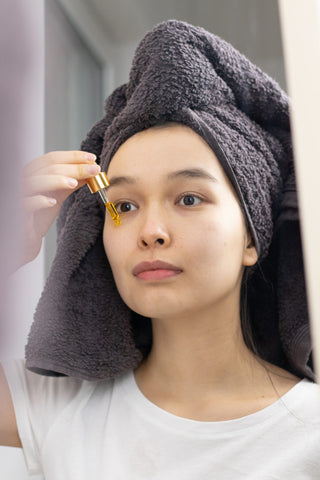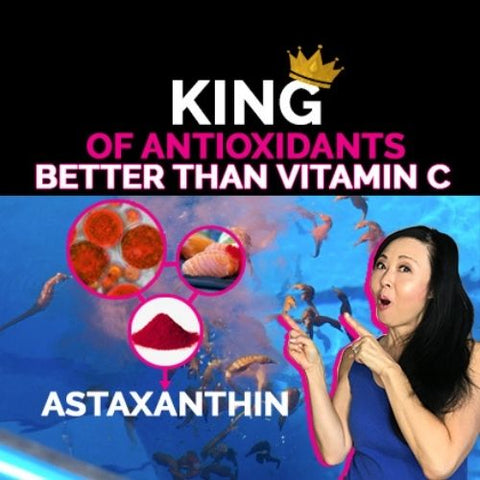Anti Aging tip: Sunscreen-What the beauty industry is NOT telling you.
The beauty industry and the skin care industry put so much confidence in sunscreens.
If you are using Retin A, just use sunscreen and everything will be okay.
Are you using acne medication or antibiotics? Just use sunscreen.
Do you have age spots or hyper pigmentation? Just use sunscreen.
Yes. You should wear sunscreen.
However, here are some misconceptions or myths that the beauty industry doesn’t tell you or is rarely talked about.
First, for clarification purposes:
UV B-burning rays
UV A- Aging rays-this is the PRIMARY contributor for aging of the dermis and Malignant Melanoma.
**Applies to sunscreens test in the US -FDA testing**
Initially, most sunscreens were formulated to protect the skin from the burning UV B rays. High SPF does not necessarily mean high UV A protection.
Most sunscreens are marketing as “broad spectrum” sunscreen. They are permitted to claim UV A protection although there really is no way to see how much UV A is being absorbed just by looking at the label.
Up until 2012, broad spectrum had no clear definition according to any specific guidelines.
SPF (Sun Protection Factor) is the only rating for a sunscreen and it only tells how much UV B is screened not UV A.
So consumers still really don’t know how much UV A is being absorbed. However, because of the SPF label on the sunscreen, it does tell consumers how long they can stay in the sun without burning.
***PRO TIP***
Use a high SPF (30-50). The higher SPF formulations screens some of the UV ray in the lower UV A spectrum but not all the UV A.
“When sunscreens test to earn their SPF rating, they tested indoors with simulated sunlight. But when tested in actual outdoor conditions, the sunscreen rarely performed up to their claimed readings.”
UV A RAYS
can go through:
-Windows/Glass
-Clouds
-Water
-produced by Fluorescent lights
-Contributor to photo sensitive drug reactions
-Light Sensitive disease
-Development of skin Cancer
So, don’t believe that just because you apply some sunscreen , that you are being thoroughly protected because as of yet, there are NO SUNSCREEN out on the market today (US) that protects against the entire UV A spectrum.
What to Look for in Sunscreen:
As of right now, only Benzophenones and anthranilates (rarely used) offer “some protection” of the SMALLEST section of the UV A light but even those don’t protect against the upper UV A rays.
-*Look for Benzophenone -3, -4, or -8 combined with phrases such as , “Broad Spectrum sunscreen”-just this ingredient alone doesn’t guarantee broad spectrum protection. However, some protection from UV A is better than none.
The downside may be becaue it is a chemical sunscreen, those with sensitive skin, acne, or those using Retin A or AHAs may find this irritating to the skin.
Alternative Sunscreen Options for Sensitive, Acne, Rosacea Skin:
For those who have sensitive skin, react to chemical sunscreens, using Retin A , AHA, have Rosacea, or had laser done, chemical sunscreens may not be a great fit.
Sunscreens for oily, break out prone skin
Another option would be to use non micronized mineral sunscreen that the FDA has deemed to be GRASE (Generally Regarded as Safe and Effective).
Lira Clinical Oil Free sunscreen goes on smooth and works great under make up. It also has lightening ingredients to help lighten uneven age spots and acne scars.
Lira Clinical Hydrating Sunscreen
It contains (as of this writing) -21% Zinc Oxide
The two minerals sunscreen ingredients are:
-Zinc Oxide
-Titanium Oxide
The mineral based sunscreen stays on top of the skin, and zinc oxide is a natural anti inflammatory.
Frequent reapplication is necessary because it stays on top of the skin and it can be easily rubbed or smeared off.
I realize that this may not be realistic for some of you, but the best protection, according to some dermatologists is to avoid the sun altogether when using these products. (I know for me, living in Southern California and loving the outdoors, this is not realistic.)
FDA Sunscreen and Make Up-What the Beauty Industry Doesn’t Tell You
Because of all the education of the importance of protecting your skin from the sun, the beauty industry started marketing sun protection in their make up, foundation, powders, and even lipsticks. So of course, consumers were thinking that by just applying make up, they were getting enough sun protection.
When in fact, according to the FDA, the amount used in SPF testing is way more than what people are actually using in real life.
For example, according to the FDA tests, you would have to use:
-Entire tube of lipstick
-7x the amount of foundation that most people wear
-Two fingers wide of moisturizer
in one application.
This also includes mineral make up.
In 2012, the FDA ordered SPF claims to be removed from powders.
Now, can these products help ? Sure. Every little bit helps. However, the FDA didn’t want consumers to think that just by applying cosmetics with SPF , they were getting sufficient sun protection.
If you are using a SPF 30 sunscreen, it is best paired with an SPF 30 make up here’s WHY
A powder that works well with sunscreen
Sunscreen Myths: What the Beauty Industry Doesn’t Tell you
Sunscreens do NOT prevent further protection from burning ONCE you are already sunburned. If your skin is already starting to turn pink/red-get out of the sun immediately.
So if your skin is already starting to show signs of being burned, then any more exposure will only exponentially cause more damage.
The solution is to get out of the sun.
If you are using Retin A , AHAs, Acne or lightening products, or antibiotics that can cause photo sensitivity, then your skin is so much more prone to damaging rays and your skin can burns faster that the average person.
SUNBLOCK-there is no such thing. Since there are NO SUNSCREENS that cannot completely block out all UV rays, in 1999, the FDA decided the term “sunblock” should not be used.
SPF 15 blocks 93% UV rays
SPF 30 blocks 97% UV rays
SPF 50 blocks out 98% UV rays
SPF 98 blocks out 99% UV rays
and this only applies only if you use the same amount that was used in the testing to determine SPF.
If you would like more information on the current FDA testing and regulations in addition to the sources, they will be located below:
Sources used and more complete Information:
https://www.fda.gov/downloads/Drugs/GuidanceComplianceRegulatoryInformation/Guidances/UCM473464.pdf
New Regulations to Make Sunscreens Safe and Effective
Effects of Infrared Radiation and Heat on Human Skin Aging in vivo, Cho et al, Journal of Investigative Dermatology Symposium Proceedings (2009)
Follow us @
YouTube Channel:https://www.youtube.com/channel/UC4XGWX6eheTisHo8UBsdOWA
Instagram:@GoSeeChristy
Facebook:https://www.facebook.com/goseeChristyBeautyBoutique/
Twitter:https://twitter.com/goseechristy
Pinterest:https://www.pinterest.com/goseechristy/




